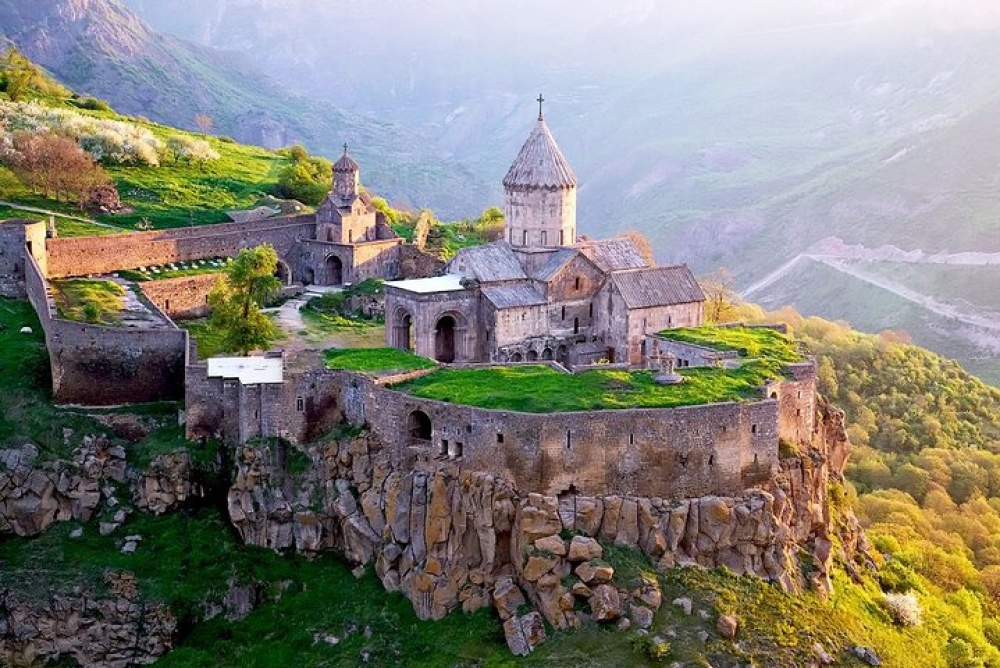

Tucked away in the scenic landscape of Syunik Province, the Tatev Monastery stands as a testament to Armenia's rich historical and religious heritage. Perched on the edge of a deep gorge of the Vorotan River, Tatev has played a significant role in the history of the region since its construction in the 9th century.
The history of tourism at the Tatev Monastery dates back centuries when it first gained prominence as a center of education and religion. Founded in 895 AD by Prince Ashot Bagratuni, the monastery was named Tatev in honor of Eustathius, a disciple of Saint Paul and Saint Thaddeus who preached in that location. Over the centuries, it flourished and was a key spiritual and feudal domain in medieval Armenia.
Interest in Tatev as a tourist destination picked up significantly during the Soviet era. In the 20th century, despite the suppression of religious institutions, the monastery drew visitors due to its architectural marvels and breathtaking surroundings. It became part of the tour itineraries for those interested in Armenian history and the Orthodox Christian faith.
After Armenia gained independence in 1991, Tatev underwent a renaissance as a cultural landmark and a pilgrimage site. International recognition and the establishment of the "Wings of Tatev", the world's longest non-stop double track cable car, have significantly increased visitor traffic to the monastery. The cable car journey offers stunning views of the Vorotan Gorge and has become a highlight of the visit to Tatev, combining tourism with adventure.
In recent years, Tatev has been the beneficiary of numerous preservation efforts and has been included in the tentative list of UNESCO's World Heritage Sites. These efforts have made it a must-visit for those interested in medieval architecture, featuring the famed Gavazan pillar, an engineering marvel of the Middle Ages designed to forewarn of seismic activity.
Today, the latest trend in tourism for Tatev and the surrounding Goris region is eco and adventure tourism, leveraging its natural beauty and historical significance. Travelers seek out remote, authentic experiences, and the monastery, situated in the dramatic landscape of the Armenian highlands, offers just that. The growth of comfortable guesthouses, local culinary experiences, and hiking paths in the region suggest a sustainable model for tourism that preserves the monastery's spiritual atmosphere and natural environment.
When visiting the Tatev Monastery, travelers are encouraged to explore beyond the main complex, including the ancient hermitages and nature trails in the vicinity. The best times to visit are spring and autumn, when the weather is more temperate and the natural scenery is particularly vibrant.
In conclusion, the Tatev Monastery continues to be a beacon of Armenian culture and history. Its blend of natural beauty, spiritual significance, and historical richness ensures its place as a cornerstone of Armenian tourism for many years to come.